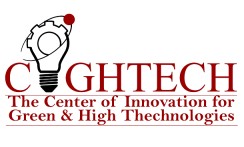About Conference
Toxicogenomics Meet-2020 welcomes attendees, presenters, and exhibitors from all over the world. We are delighted to invite you all to attend and register for the “International Conference on Toxicogenomics scheduled during December 09, 2020 based on the theme “Toxicogenomics in Regulatory Application: Challenges and Opportunities”.
TOXICOGENOMICS MEET 2020 aims to bring together scientists, doctors, professors, lecturers in Toxicology, Genomics, Bioinformatics, Pharmaceutical researchers, students, training institutes, Laboratories, association and societies, and individuals have an interest in the field of Toxicology and genomics.
Email :toxicogenomics@memeetings.com
Brochure link: click here
Abstract Submission link: click here
Registration link: click here
Why to Attend???
Toxicogenomics Conference provides a global platform for exchanging ideas and makes us updated about the advancements and innovations in Toxicology and genomics in a wide range. The conference regular sessions will be followed by the exhibition and sessions of Networking. Expecting leads and global business exposure from Directors, CEOs, and eminent experts from Academia and Industry.
We hope this lays an excellent platform to share your best Toxicology practice initiative, research project, or provide continuing education as it relates current topics and advances around the industries and field of research. Toxicogenomics 2020 provides participants with breakout sessions highlighting clinical projects, education, and research studies. The conference on Toxicology has engaging interactive presentations, and keynote panel discussions with key policymakers and experts in Toxicology and Genomics.
Sessions/Tracks
Toxicogenomics uses new technologies to analyze genes, genetic polymorphisms, mRNA transcripts, proteins, and metabolites. The foundation of this field is the rapid sequencing of the human genome and the genomes of dozens of other organisms, including animals used as models in
toxicology studies. Whereas the
human genome project was a multiyear effort of a consortium of laboratories, new rapid, high-density, and high-efficiency sequencing approaches allow a single laboratory to sequence genomes in days or weeks.
Gene sequencing technologies have also enabled rapid analysis of sequence variation in individual genes, which underlies the diversity in responses to chemicals and other environmental factors.
In the area of toxicology, the subdiscipline of toxicogenomics has emerged, which is the use of genome-scale mRNA expression profiling to monitor responses to adverse xenobiotic exposure. Toxicogenomics is being investigated for use in the triage of compounds through predicting potential toxicity, defining mechanisms of toxicity, and identifying potential biomarkers of toxicity. Whereas various approaches have been reported for the development of algorithms predictive of toxicity and for the interpretation of gene expression data for deriving mechanisms of toxicity, there are no clearly defined methods for the discovery of biomarkers using gene expression technologies. Ways in which toxicogenomics may be used for biomarker discovery include analysis of large databases of gene expression profiles followed by in silico mining of the database for differentially expressed genes; the analysis of gene expression data from preclinical studies to find differentially expressed genes that correlate with pathology (coincident biomarker) or precede pathology (leading biomarker) within a lead series; or gene expression profiling can be performed directly on the blood from preclinical studies or clinical trials to find biomarkers that can be obtained noninvasively. This chapter broadly discusses the issues and the utility of applying toxicogenomics to biomarker discovery.
Therapeutic drug monitoring (TDM) is the use of drug concentration measurements in body fluids as an aid to the management of
drug therapy for the cure, alleviation or prevention of disease. It has long been customary to adjust the dosage of drugs according to the characteristics of the individual being treated and the response obtained. Physicians have been most ready to do this when the pharmacological response can be easily established by clinical means (e.g., antihypertensive drugs, analgesics, hypnotics) or by laboratory markers (e.g., anticoagulants, hypoglycemic agents, lipid-lowering drugs, hormone preparations). If there is a wide margin between the toxic dose and the therapeutically effective dose, then monitoring may be unnecessary (e.g.,
penicillin’s). However where this is not the case and the drug’s action cannot readily be assessed clinically (e.g., in the prophylaxis of
seizure or mania) or when toxic effects cannot be detected until severe or irreversible (e.g., aminoglycoside antibiotics, immunosuppressant), then dosage individualization is much more difficult, though no less important.
These studies revealed two main points: first, that toxicity in animals may be likely to also be present in humans, though this cannot be considered particularly consistent or reliable, due to considerable variability and lack of any clear pattern in types of toxic effects; and secondly, perhaps more crucially, that the absence of toxicity in animals provides essentially no insight into the likelihood of toxicity or absence of toxicity in humans.
Pharmacokinetics involves the study of
absorption, distribution, metabolism, excretion and
toxicity of
xenobiotics (ADME-Tox). In this sense, the
ADME-Tox profile of a bioactive compound can impact its efficacy and safety. Moreover, efficacy and safety were considered some of the major causes of clinical failures in the development of new chemical entities. In this context, machine learning (ML) techniques have been often used in ADME-Tox studies due to the existence of compounds with known pharmacokinetic properties available for generating predictive models.
An
adverse outcome pathway (AOP) is structured representation of biological events leading to adverse effects and is considered relevant to risk assessment. The AOP links in a linear way existing knowledge along one or more series of causally connected
key events (KE) between two points — a
molecular initiating event (MIE) and an adverse outcome (AO) that occur at a level of biological organization relevant to
risk assessment. The linkage between the events is described by key event relationships (KER) that describe the causal relationships between the key events. AOPs are important for expanding the use of mechanistic toxicological data for risk assessment and regulatory applications.
The
Cardiovascular Toxicology is the field of Toxicology that deals and studies with the agonistic and antagonistic impacts on the blood circulatory system which result from the introduction to chemicals. It is the study about the information of the hindrance actions of the newly introduced
cardiovascular drugs. Some of the drugs whose impact is on Circulations and Central nervous system which ultimately affect that centres heart rhythm such as Arrhythmia or might as well cause
cardiogenic shock or death or sometimes they show effect indirectly on circulation by inducing effects on Blood pressure which might be due to associated arrhythmias. Thus the study of these effect and related consequences has been a breakthrough in the phase of
Cardiology and Toxicology.
Haemostasis is the first step of wound healing after the wound ceases to bleed due to a mechanism of Coagulation. If the process of haemostasis does not occur it might lead to an excess loss of blood which can lead to the
hypovolemic shock or even death of the individual. The liquid monomer component of Methyl Methacrylate is a
cytotoxic component which is associated frequently with fatal cardiorespiratory collapse in cases of Implantations of acrylic cements. And some of the cases where the usage of the
NSAIDS may lead to an increased tendency of bleeding which can be considered fatal some times and thus the study of the effect of Haemostasis play a very important role in the field of Toxicology. Hence the study of the Knowledge is essential in cases of drug effects on Haemostasis.
-
Blood glucose
-
Levels of blood gases
-
Blood oxygen content
Toxicopathology is the analysis, investigation, development of risk assessment and
risk management of the changes in the structural and functional aspects of cells, tissues, and organs that are caused by
toxins, poisons, and physical operators and policies based on such information. Toxicopathology primarily deals with the mechanism by which this functional and the structural effect is induced. The session of Toxicopathology mainly covers the overall knowledge gain about the effects of toxins and different chemicals that effects on the various functions of the structural and functional units in the
human body.
Genetic toxicology is a branch of the field of toxicology that assesses the effects of chemical and physical agents on the
hereditary material (DNA) and on the genetic processes of living cells. Such effects can be assessed directly by measuring the interaction of agents with DNA or more indirectly through the assessment of
DNA repair or the production of gene mutations or chromosome alterations. It is important at the outset to distinguish between genotoxicity and mutagenicity.
Genotoxicity covers a broader spectrum of endpoints than
mutagenicity. For example, unscheduled DNA synthesis (UDS), sister chromatid exchanges (SCEs), and DNA strand breaks are measures of genotoxicity, not mutagenicity because they are not themselves transmissible from cell to cell or generation to generation.
Genomic Approaches for Cross-Species Extrapolation in Toxicology provides a balanced discussion drawn from the experience of thirty-five scientists and professionals from diverse fields including
environmental toxicology and chemistry,
biomedical toxicology,
molecular biology, genetics, physiology,
bioinformatics, computer science, and statistics. Predictive toxicology is the study of how toxic effects observed in model systems (or humans) can be used to predict pathogenesis, assess risk, and prevent human disease. Improving risk assessment is an essential aim of predictive toxicology.
Reproductive and Developmental Toxicology, is a comprehensive and authoritative study that deals with parent, placenta, and foetus and the continuous changes that occur in each and relation to discussing a broad range of topics, including nanoparticles and radiation, gases and solvents, smoking, alcohol and drug abuse, and metals, amongst others along With a special focus on
placental toxicity. Reproductive toxicity includes the effects of a toxic substance on the reproductive ability of an organism and later stages of development of the offspring and as well referred to as an adverse effects of chemicals substances on sexual functioning and
fertility in reproducing individuals, as well as later developmental toxicity which is noticed in the offspring. Developmental toxicity refers to the adverse effects induced during the stages of
pregnancy, or as a result of parental exposure to chemicals during pregnancy or at any point in the life span of the organism during its stages of development.
Toxicgenomics is a sub discipline of
pharmacology that deals with the collection, interpretation, and storage of information about gene and protein activity within a particular cell or tissue of an organism in response to exposure to toxic substances. Toxicogenomics is defined as the application of
genomic technologies (for example, genetics,
genome sequence analysis, gene expression profiling,
proteomics, metabolomics, and related approaches) to study the adverse effects of environmental and pharmaceutical chemicals on human health and the environment. Toxicogenomics may lead to information that is more discriminating, predictive, and sensitive than that currently used to evaluate toxic exposure or predict effects on human health.
Toxicogenomics is defined as the study of the structure and function of the genome and its responds to adverse xenobiotic exposure. It is the toxicological subdiscipline of pharmacogenomics, which is broadly defined as the study of inter-individual variations in whole-genome or candidate gene single-nucleotide polymorphism maps, haplotype markers, and alterations in gene expression that might correlate with drug responses.
-
Compliance guidance
-
Medical toxicology
-
Computational toxicology








